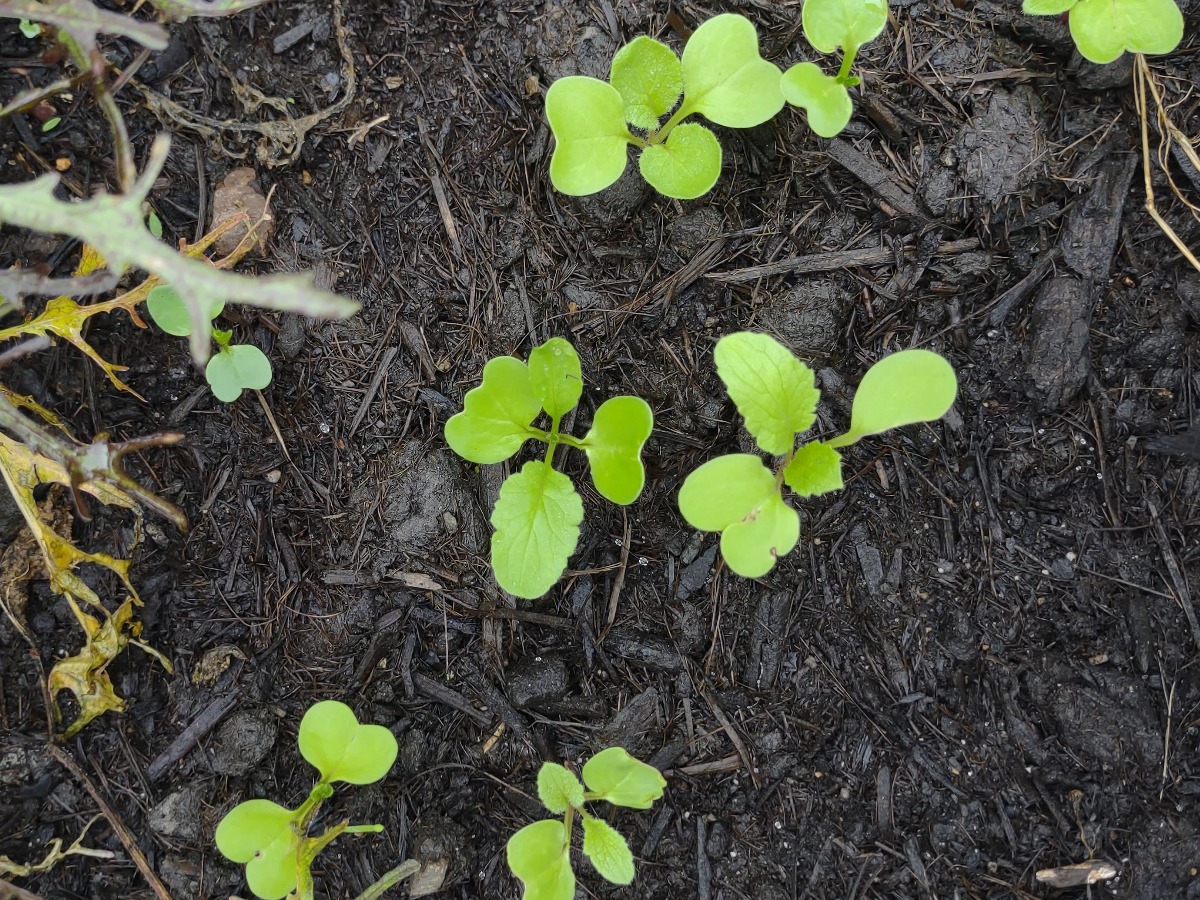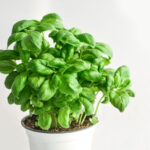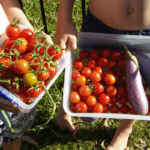This post may contain affiliate links.
Yes, you can grow many varieties of radishes in the tropics with great success. As radishes are a very fast maturing root vegetable food plant to grow from seed, theyre actually a very fast crop and can thrive in a tropical climate. Both the roots and leaves of radishes are edible and can be preserved or cooked as a vegetable in various ways which we will cover in this post. Radishes are of the family Brassicaceae and may require some specific conditions and care due to the warm climate, but this is quite dependent on your tropical microclimate. Here are some factors to consider when growing radishes in tropical regions.

Sewing radish seeds is absolutely cost effective and growing your own radishes can save you money on grocery bills and boost your heath, if, of course you like radishes. If you feel you don’t enjoy eating radishes try fermenting, pickling or cooking them, they really are a delicious garden treat and their abundant leaves make a good leafy veg too!
All Radishes (Latin name Raphanus raphanistrum subsp. sativus) come in various varieties, the fast-growing classic salad varieties such as French breakfast, and longer growing types like China rose that get larger over a longer season, up to 45 days, 6 and a half weeks.
Raphanus sativus, is thought to have originated in Southeast Asia, as this is the only region where the wild forms of radish have been discovered.
You should also try multiple varieties of radish, the flavour and degree of “heat” or pepperyness varies enormously.
Growing Radishes in The Tropics

How to grow radishes in the tropics? Read the following tips, but radishes really are very easy to grow, fast to germinate and quick to harvest. This versatile plant’s leaves can also be eaten as a cooked green vegetable.
Pests can cause damage to roots and leaves, but just keep a watchful eye on your crops to nip pest infestations in the bud.
Of course, if like us you have free range chickens, you will need to chicken-proof your radish beds or pots, your chickens will love to destroy your radishes!
- Temperature: Radishes prefer cool weather and do not tolerate extreme heat. In the tropics, you’ll need to choose radish varieties that are heat-tolerant or suitable for warm climates. Look for varieties specifically bred for tropical or sub-tropical regions. where possible.
- Sunlight: Radishes need plenty of sunlight to grow and develop properly. Ensure that your growing area receives at least 6 hours of direct sunlight each day, 6 hours of sun is considered “full sun”. In the tropics where our light is so intense, radishes can do well with much less light and can even do well in shade. Shade cloth is a good idea to protect radish seedlings or new transplants.
- Soil: Radishes grow best in loose, well-draining, nutrient rich, soil. Ensure that the soil is rich in organic matter and has good drainage. If the soil in your area is heavy or clay, consider improving it by adding compost or organic matter to improve its texture and fertility. You can top dress radish beds with compost or well rotted manure to give them a boost at any time.
- Watering: Adequate moisture is crucial for radish growth, but be careful not to overwater. Keep the soil consistently moist but not waterlogged. In tropical climates, where heavy rainfall is common, you may need to adjust your watering frequency accordingly.
- Timing: Timing is important when growing radishes in the tropics. Radishes are quick-growing vegetables, and in warm climates, they tend to bolt (go to seed) quickly if exposed to high temperatures for extended periods. Plant them during the cooler seasons or choose varieties with a shorter maturity period to ensure a successful harvest. You can use shade cloth or natural shade to help stop radishes bolting and to extend their growing season.
- Shade and mulching: In hot tropical climates, providing some shade or using mulch can help protect radishes from excessive heat. Consider using shade cloth or planting radishes in partially shaded areas. Mulching the soil with organic materials like straw, sugar cane mulch, chop and drop, or even grass clippings, can help retain moisture and keep the soil temperature cooler while allowing the organisms that live in your soil to flourish.
- Pests and diseases: Keep an eye out for common pests and diseases that may affect radishes in your region. Consult with local gardening resources or agricultural extension services to learn about potential pests and diseases in your specific tropical area and the appropriate control methods. The only pest we’ve seen on our radishes are grasshoppers so far.
By considering these factors and adapting your growing techniques to suit the tropical climate, you can successfully grow radishes and enjoy their crisp and peppery flavors in your home garden.
Varieties of Radish For Tropical Climates
There are dozens of varieties of radish. The heirloom variety, French breakfast is very poplular and easy to grow. This is a small radish about 4cm long, or you could go with daikon radish (Raphanus sativus var. longipinnatus), these long white radishes can grow to 30-40 cm long so give you more food yield per are of soil.
Consider how deep your pots and beds are before planting daikon radish.
Radish can be white, black (black spanish radish), golden, red, purple or brown, some are long and thin (fire candle is a long thin red variety of radish) or small and round (hailstone is a small round white radish).
All radishes are pretty easy to grow, year round although the cooler months are better for radish.
Should Radishes be Direct Sown or Can They Be Transplanted
You can buy radish starts and transplant them into your garden beds from seed trays, but radishes and all root vegetables are generally better if direct sown into a pot, raised bed, or your in-ground prepared beds.
As radishes are so quick to grow there’s really no point in paying for young radish starts rather than buying a packet of seeds.
How Long Do Radishes Take to Grow?
Radishes are some of the fastest food crops to grow. From sowing seed to harvesting radishes can take as little as 4 weeks with some variations by species. Others may take 6-8 weeks to reach maturity. If the weather is warmer, with plenty of sunshine and good conditions, radishes will be ready faster, that’s good news for those of us growing radishes in the tropics.
For instance, the time to maturity for radishes can be 35-40 (Spring/Summer), 40-45 (Fall/Winter). These timings are affected by the number of hours of daylight the plant receives and weather conditions.
Companion Plants For Radishes in The Tropics
Radishes are fast-growing and versatile vegetables that can be grown in various garden settings. Companion planting can help maximize their growth and minimize pest problems. Here are some good companion plants for radishes:
If you need to help other plants by growing radishes, planting them near cucumbers, peppers and squash, can draw aphids away from these plants and onto your radishes. This is called using radishes as a trap crop.
- Leafy greens: Radishes grow well with leafy greens like lettuce, spinach, and arugula, all of these plants can be grown in the tropics if given the correct conditions, with tropical winter being a better time for most leafy greens. The radishes’ fast growth helps provide some shade for the leafy greens as they mature, keeping them cooler and preventing them from bolting too quickly.
- Herbs: Certain herbs can benefit radishes. Basil and chervil, for example, repel pests that commonly attack radishes, such as aphids. Dill and parsley also work well as companion plants for tropical radishes.
- Brassicas: Radishes are part of the brassica family, which includes cabbage, kale, broccoli, and cauliflower. These plants are compatible with radishes and can provide some shade and shelter.
- Carrots: Radishes and carrots are often mentioned as beneficial companion plants. The radishes’ fast growth helps break up the soil, making it easier for carrots to penetrate and grow straight.
- Nasturtiums: Nasturtiums are known to deter pests, including aphids, whiteflies, and cucumber beetles. They can be planted alongside radishes to provide some natural pest control.
- Peas: Radishes can be planted with peas as a way to maximize garden space. Radishes grow quickly and can be harvested before the peas need the space to spread out. Peas and snow peas are usually a winter crop in the tropics.
- Squash: Planting 3 or 4 icicle radishes around the mound where you plant squash, pumpkins or cucumbers and allowing them to grow and bloom, is said to prevent most pests of squash and cucumber.
Remember that these companion planting suggestions are not guaranteed to work in all situations, as every garden is unique. It’s a good practice to experiment and observe the interactions between plants in your specific growing conditions to determine what works best.
Do Radishes Flower or Bolt in Tropical Climates?
Yes radishes will bolt if you leave them in the ground in full sun for too long. The roots can also become woody or pithy rather than crisp. If you leave radishes in the ground for too long your radishes won’t be good to eat, so harvest them as soon as they are ready.
It’s best to succession sow radishes in small batches to have a supply of fresh radishes and radish greens for months on end.
Mulch for Radishes in the Tropics
You can mulch around your radish plants once the seedlings have emerged. This helps to keep the soil moist and cooler, while deterring weeds. You can use any natural pesticide-free much material or a man-made cover such as weed mat with holes cut for each plant.
Baby Radish Leaves
There is a photo of baby radish leaves and seedling further up the page, radish seedlings are easy to identify.
Can You Grow Radishes in Raised Beds in Tropical Climates?
Yes, radishes can be grown in raised beds, pots, buckets, and anything that will hold soil. Consider the length of the radish variety and the depth of your pot. The small round varieties of radish should be fine, but longer radishes like daicon will need a really deep pot or raised bed.
Can You Grow Radishes in the Tropical Wet Season?
You can grow radish in the tropical wet season, I’ve done it, but your results will generally be better in the cooler months. Higher temperatures will make the flavour of the radish much more bitter and they’re likely to rot is sodden soil. It’s best to grow radishes in winter spring and fall in the tropics.
Can You Grow Radishes in Winter in The Tropics
Yes, radishes grow well in the tropical winter and at this time of year you shouldn’t need shade cloth once the seedlings are established.
When To Harvest Radishes
Garden radishes are usually ready for harvest between three to five weeks after planting. Check your seed packet for the number of days recommended for your particular variety. You can harvest radishes by simply pulling them from the ground, there’s no need to pull them up. Really, you can harvest them any time they reach a size that is useful to you. Radishes will get woody or fibrous and develop a stronger taste if left in the ground too long, they will start to bold or go to seed.
What To Do With Radishes
Radishes are great in a tropical salad, sliced very thinly. A hand held mandoline is perfect for slicing radishes. You can also roast radishes, pickle them, or ferment them.
Storing Radishes
Wash your radishes well and remove the green leaves. You can use the green leaves like spinach in cooked dishes. Leave the long root intact. You can then wrap them in a damp cloth or paper towel and store them in a jar, plastic bag or sealable box in your fridge. Radishes should keep well in a fridge for a week or two. On the counter they’ll only stay crisp for a day or so, it’s best to get them pickled or fermented as quickly as possible after harvesting.
Fertilizer For Radishes
Because radishes grow so fast you’re unlikely to need to fertilise radishes during their growth period, so long as the soil was well prrepared with nutrients before sewing. To do this enrich your beds with a layer of compost prior to planting.
Root vegetables store water and starch in their enlarged roots, so it is the ability to use sunlight in photosynthesis, to make sugars, that will affect the size of your radishes. Of course, to do this the radish plant must be healthy and have sufficient water and nutrients.
Radishes enjoy phosphorous, so bone meal is a good option. A fertiliser that is too heavy in Nitrogen will encourage leafy growth rather than root growth, perfect if you plan to eat radish leaves. Trace minerals and nutrients can also be added in the form of rock dusts, ash, kelp, or your own well rotted compost or liquid fertiliser.








